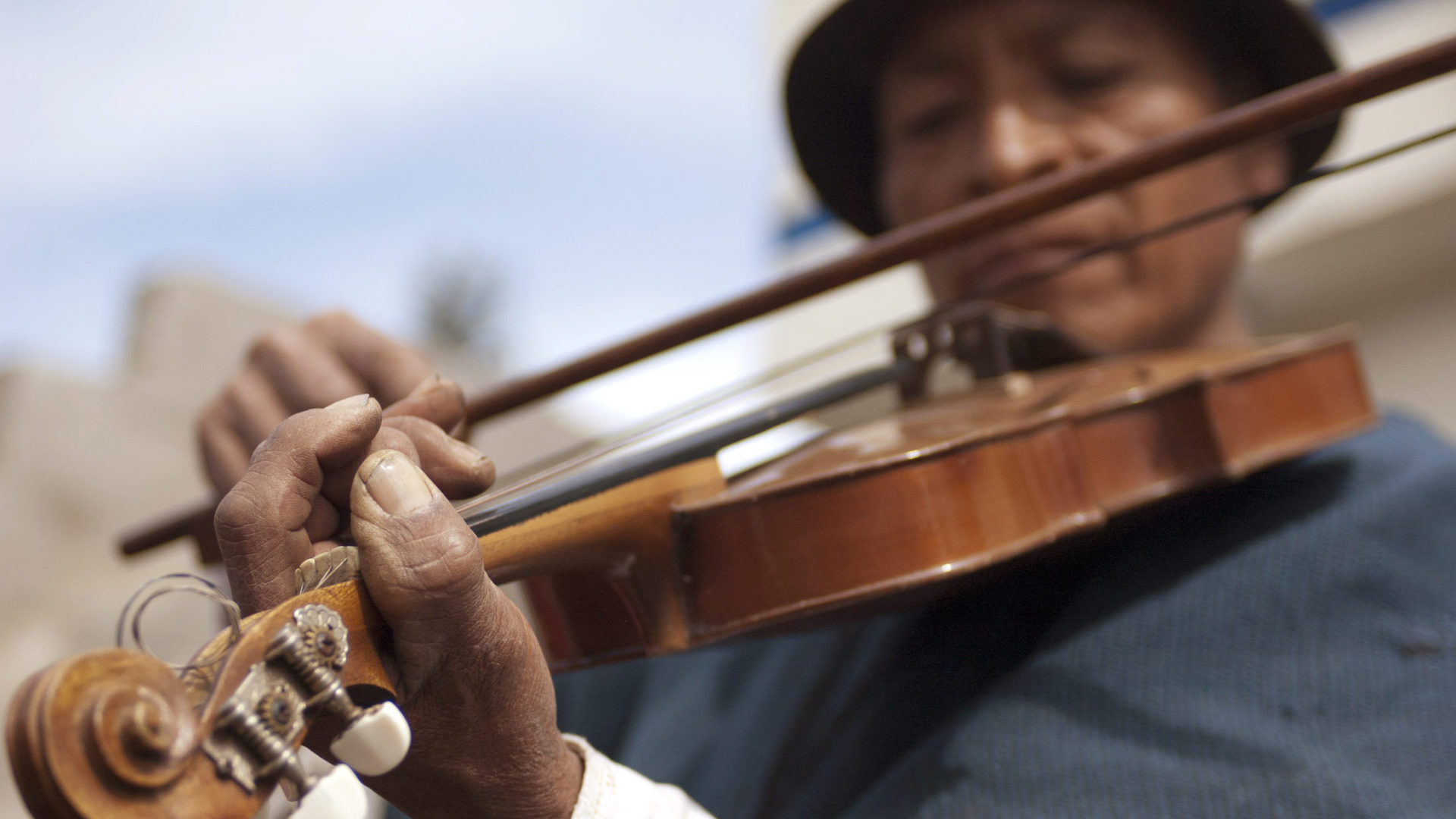Let’s face it: we humans like neat categories. We prefer classifications that are easy to grasp. Take music, for example. We classify music into genres, which are perceived as static and “pure” despite the fact that they are always evolving.
So what happens when a neat category is disrupted, such as when a traditional indigenous society’s music encounters modernity? Can the indigenous music survive? Does it have to stay the same?

Missionaries often ask similar questions when a society first encounters Christianity. What should their worship music sound like? Today, these missionaries seek to encourage new Christians to express their worship through music in a culturally authentic way. But that wasn’t always the case.
The Beginning of Xerente Christian Music
Baptist missionaries encountered the Xerente (pronounced Sheh-ren-teh), a small indigenous people in central Brazil in the 1960s. They served the Xerente through medical and social care, taught them the gospel, and began the arduous task of translating the Bible into their language: Akwẽ.
Amid tumultuous political changes and threats to the peoples’ culture, the gospel took root in the heart of those who came to faith. Among the Xerente, people were and still are being born again, and the missionaries can now work in full partnership with local Christians. Today, there are four thousand Xerente in over eighty villages. About one thousand profess faith in Christ.
Along with the gospel, though, the missionaries brought their traditional hymnody with them. That’s what they knew, so that’s what they passed along as an integral element of Christian worship services. The Xerente loved the hymns and kept the missionaries up late into the night to hear and learn them.
Faster-paced worship choruses with electric instruments were added in the seventies. Then, the eighties brought strong cultural revival in Brazil, and some Xerente Christians began to compose their own songs. Finally, in the mid-nineties, young men learned to play the guitar and the electronic keyboard—instruments commonly used by missionaries and in popular genres coming out of northeastern Brazil.
By then, most Xerente traditional wind and percussion instruments had gone out of use. The new musicians became proficient guitarists and keyboardists by learning from one another, and now most of their churches have instrumentalists to lead in worship.
The Fusion of Traditional and Modern Styles
There is considerable agreement among anthropologists and ethnomusicologists that cultures are not static. Cultures can’t remain neat categories. Tastes, expectations, and ways of thinking all keep changing due to influences within our cultures and outside of them. Generally, as long as we are comfortable with the changes, we don’t mind where those changes came from.
Take The Beatles, for instance. Their style, sound, and persona were not native to the US. Yet US musicians and fans were captivated by their influence and used it to springboard their own creative expressions and views.
This was the case for the Western missionary influence on the Xerente church. However, the ever-growing presence of electronic music blended with the popular genres of northeastern Brazil (ex. forró, tecnobrega) was probably the main agent for the Xerente church’s musical transformation—and just as foreign.
Northeastern Brazil’s new and amplified sounds became commonplace for the Xerente. Musicians now play keyboards with preset rhythms and sounds. They pipe acoustic guitars through the sound system. Microphones are a constant companion of singers and preachers. The whole village can now hear what goes on inside the unsealed wooden church structures.
Still, indigenous elements remain. Xerente Christians, who have been singing in Akwẽ for a long time, brought their language’s linguistic inflection to their electronically supported worship songs. Traditional singing habits (scooping to and falling off a note in anticipation of the next pitch) appear regularly in the newly fused Christian genres.
“Today’s cross-cultural workers need to invite the community’s ownership of their own cultural and church development.”
Melodic contours maintain strong resemblance to traditional cultural songs. The repetitive character and form of their traditional music appear to be the chosen default for new compositions. Some musicians have also incorporated their rattle, which was traditionally only used by the shamans.
All these indigenous features partner with the accompaniment of electronic instruments and Western chords to produce a genre that appears to communicate “Christian worship” to the present generation of Xerente. They have not forgotten the hymns, and they still love their traditional genres. But their blending of the two is now a regular feature in their church services.
Local Music and Arts: Ethnodoxology 101
Xerente fusion music genres may disappoint some because they seem “foreign” to the traditional artistic language. Admittedly, the missionaries in the sixties erred not because they meant to, but because best practices regarding indigenous music hadn’t yet been developed. But to be fair, the Xerente were also embracing music influences coming from within their own country but that weren’t native to their people. The techno-beats were just as foreign to them as the missionaries’ hymns.
So the Xerente example raises some interesting questions. To be sure, today’s cross-cultural workers need to invite the community’s ownership of their own cultural and church development. Encouraging musical and artistic forms that communicate well within a local culture is an important element of demonstrating love to a community and essential for a healthy partnership with new believers.
But for a people like the Xerente, this means encouraging them to create forms they are interested in and connect to today, not compelling them to return to indigenous instrumentation they no longer desire or recognize. This is Ethnodoxology 101.

